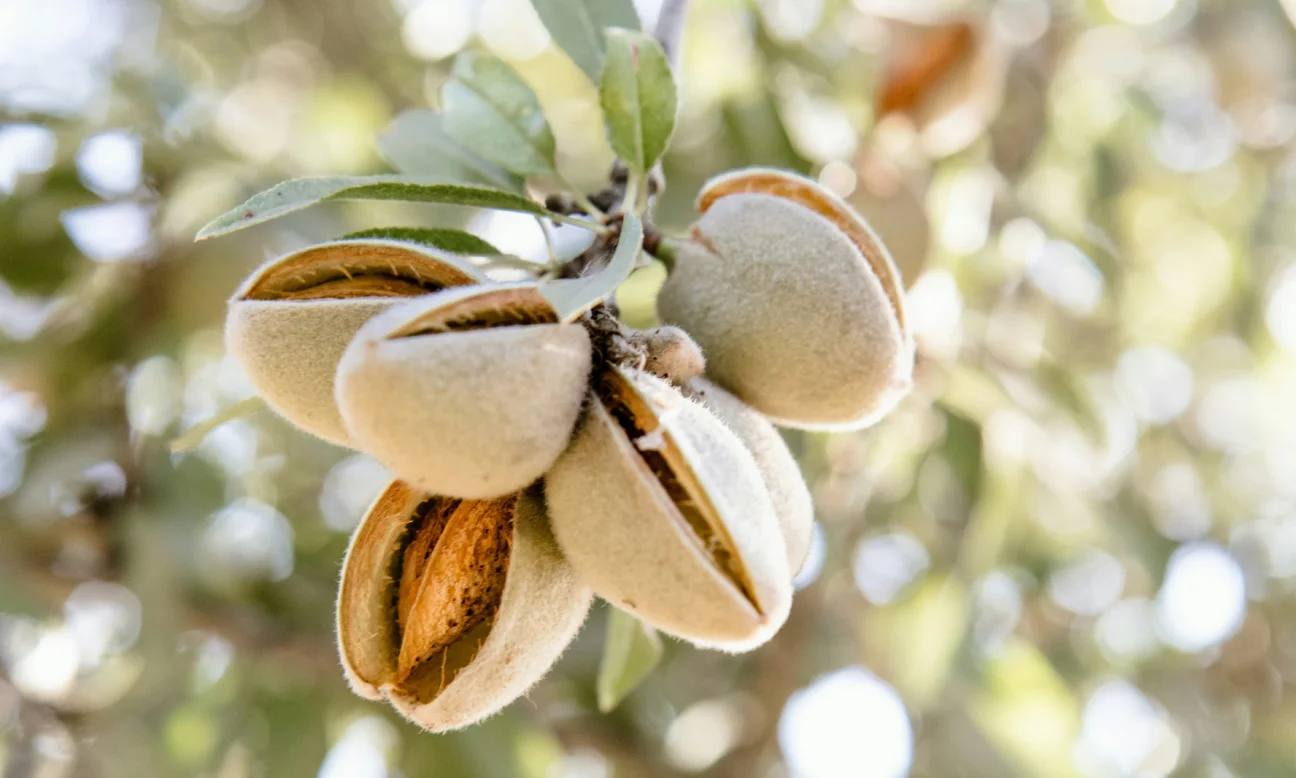Knowing about almond varieties, types, sizes, and trade terms is important for making good sourcing choices. This guide explains the basics, including common codes like NPX and CMS, and how size affects use and pricing. Whether you are buying for stores, processing, or exporting, here is what you should understand.
How Many Almond Varieties Are There?
As per the Almond Board in The United States: California almond varieties are categorized into five broad classifications based on distinguishing characteristics such as size and shape. Approximately 90 percent of almond production in California falls into the following three major classifications: Nonpareil, California, and Mission. Within those classifications there are over 30 almond varieties, many of which are grown in California. The numerous almond varieties differ in flavor, texture, shape, and application, making some better suited to specific culinary uses.
Almond Varieties California
California is the top producer of almonds in the world. They grow many types of almonds for different uses like snacking, baking, and cooking. Each variety has special features such as size, shape, shell hardness, and taste. The most popular California Almond varieties come from the following almond tree varieties: Butte, Carmel, Fritz, Independence, Mission, Monterey, Nonpareil, Padre, Price, Sonora, and Wood Colony.
Almond Types
Almond types usually talk about how almonds are processed and prepared after they are harvested. This is different from varieties, which are about the specific kinds of almonds, like Nonpareil or Carmel. In trade and food production, the most common types of almonds are:
- Natural Almonds: These are raw almonds with their skins intact. They're often used in snacking and baking.
- Blanched Almonds: The brown skin is removed using hot water or steam, leaving a smooth, white almond. These are used in confectionery, marzipan, and cosmetic-grade ingredients.
- Roasted Almonds: Almonds that have been roasted (dry or oil) for added flavor. Often seasoned and sold as snacks.
- Sliced, Slivered, Diced, or Chopped Almonds: Mechanically cut almonds used in baked items, salads, toppings, and cereals. These are available both blanched and natural.
- Almond Flour/Meal: Finely ground almonds, either from blanched (white flour) or natural almonds (darker flour with skin). Popular in gluten-free and keto baking.
- Almond Butter: Ground into a paste, almond butter is used as a spread or ingredient in snacks and nutritional products.
- Almond Paste & Marzipan: Made from finely ground almonds and sugar, often used in baking and desserts.
Almond Flavors: Bitter vs. Sweet
Not all almonds have the same taste, and not all of them are safe to eat. Sweet almonds are the type most people eat as snacks or use in baking. Bitter almonds are different; they are mostly used to extract flavors and need special care. It is important for anyone who works with almond products to know the difference between these two types:
- Sweet almonds (all commercially grown almonds) are safe and edible.
- Bitter almonds, not typically used in the food supply, contain amygdalin (which can produce cyanide) and are used industrially to make almond extract (in highly controlled, detoxified forms).
Almond Sizes
Almond sizes tell us how many almonds fit in one ounce. This helps decide the price, packaging, and how the almonds will be used. Sizes are often labeled with numbers like 18/20, 20/22, or 23/25. The numbers show how many whole almonds are in one ounce. A lower number means a larger almond.
The size of almonds is important based on how they will be used and marketed:
- Large almonds are preferred for snack items, premium retail packs, and chocolate-covered almonds. These almonds look better and have a nice crunch, which appeals to customers. Larger almonds often suggest better quality.
- Smaller almonds are cheaper and work well for processing. They are good for slicing, dicing, grinding into flour or paste, or for use in bars and fillings where looks are not as important.
Common Almond Sizes
- 18/20: Very large (18–20 almonds per ounce)
- 20/22: Large
- 23/25: Medium
- 25/27 and 27/30: Small to extra small
Common Abbreviations Explained:
- CMS - Carmel Supreme: Refers to the Carmel variety with a supreme quality grade, meaning the kernels have minimal defects and good uniformity.
- NPX - Nonpareil Extra: Indicates Nonpareil almonds graded as extra quality, smooth surface, light color, and ideal for premium retail or export.
- NPS - Nonpareil Supreme: Slightly lower than NPX but still high-grade Nonpareil almonds, often used in processing or mid-range retail.
- SSR - Standard Sliced/Slivered/Rejects: Refers to almonds used in slicing or lower-grade applications; often more economical.
- UOS - Unsized or Off-Standard: Used for almonds that don't meet specific size or appearance specs, common in bulk or industrial use.
